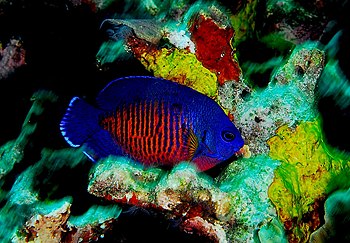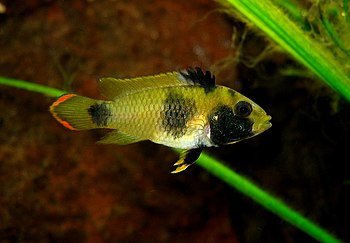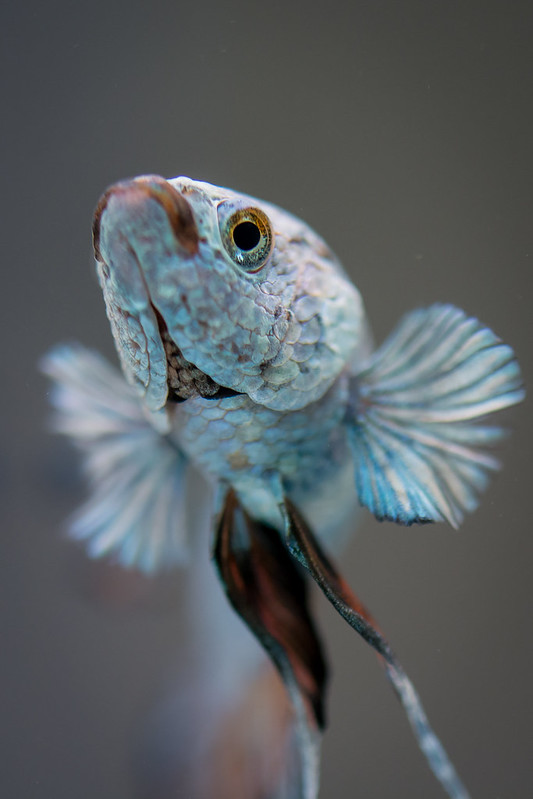 |
| Cardinal tetras Paracheirodon axelrodi waking up in an aquarium. Just after the lights were turned on. Its skin yet in a pink tone. (Photo credit: Wikipedia) |
Their body is decorated with a blue line dividing the body. The body carries red stripes which are longer. Actually, that is the distinguishing feature between a cardinal tetra and neon tetra fish. If the stripes are short, the fish is neon tetra.
In fact, the name cardinal tetra comes from this red color. It resembles the red robes which are worn by the Cardinals!
Cardinal tetras are difficult to breed in captivity so their availability is always lesser than the demand. Many pet fish stores sell cardinal tetras which are caught from their natural habitat. They are not endangered species and they are found in plenty.
They have a very short life-span of about a year, so their entire life cycle including reproduction finishes during this period. However, if you provide the ideal conditions for them in your aquarium, they can live a much longer life.
They will grow only up to 2 inches in length so they don't require a large aquarium. You can accommodate them even in a small tank of 5 gallons. As they are peaceful by nature, you can keep them in community aquariums also. Most of the time, they stay in the middle of the water so you can keep other bottom-dwelling or surface swimming fish with them.
There is no problem while feeding cardinal tetras. They can accept all types of food including vegetables, flaked food and live food like brine shrimp or blood-worms.
If you can provide the environment which resembles in South American rivers where they are found, they will live happily for a long time. The pH level of the water should be lower and the temperature of the water should be around 72-82 degrees F. They can survive even in the higher temperatures. The hardness of the water should be moderate.
Only important factor while keeping cardinal tetras is the level of toxic elements in the water. They are sensitive about the nitrates and nitrites in the water and you should set up a good filtration system to keep the water clean. In addition, you should make frequent replacements of the aquarium water.
You should provide a thickly planted aquarium for the cardinal tetras with preferably an open swimming area. There should be some floating plants in the aquarium because which will provide ideal places for cardinal tetras to hide. They do not like bright lights so the lighting in the aquarium should be moderate and the aquarium should not be in the direct sunlight.
As tetras, on the whole, are schooling fish, cardinal tetras are not an exception. While buying them, you should buy at least a group of 7-10 so that they will be happy to live with their friends. The beginners may think that this number is large but considering their easy maintenance and feeding habits, the whole group will be very colorful and lively for your aquarium.
The breeding of cardinal tetras is difficult because the fry are very delicate and sensitive to the environment and very few of them can survive. In addition, the adults eat the eggs and also the fry so it becomes very difficult for the beginners to protect the young ones.
However, those who want the enjoyment of a colorful and lively aquarium without many efforts then always go for cardinal tetras.
Chintamani Abhyankar is a goldfish enthusiast and has been raising and breeding goldfish for many years. He is an expert on their care and an advocate for raising healthy goldfish the natural way.
Article Source: EzineArticles
|







